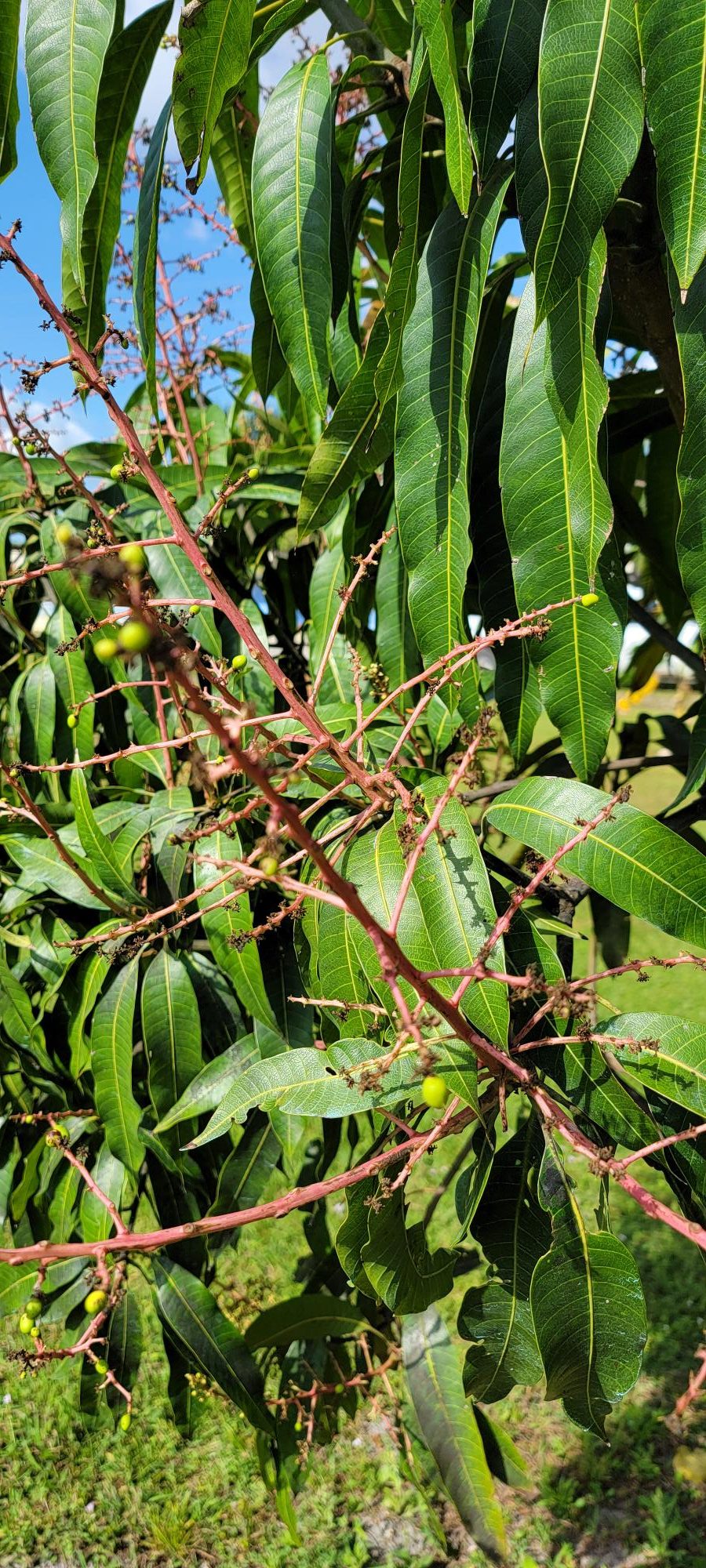
Managing anthracnose and powdery mildew on mango trees requires a combination of preventive measures and targeted treatments. Both diseases can significantly impact mango production if left unchecked. Here’s a comprehensive approach to managing anthracnose and powdery mildew:
Cultural Practices:
Pruning: Maintain good airflow within the canopy by pruning branches that are crossing or crowded. This helps reduce humidity levels and minimize conditions favorable for disease development.
Sanitation: Remove and destroy any infected plant debris, fallen leaves, or fruit from around the tree to reduce the source of inoculum for both diseases.
Spacing: Plant mango trees at appropriate distances to allow for good air circulation and sunlight penetration, which can help reduce humidity levels and minimize disease pressure.
Fungicide Applications:
Preventive Sprays: Apply fungicides preventively, especially during periods of high humidity and rainfall when disease pressure is high. Copper-based fungicides are effective against both anthracnose and powdery mildew. Apply according to label instructions.
Systemic Fungicides: In severe cases or when preventive measures are insufficient, systemic fungicides may be necessary. Consult with a local agricultural extension service or a professional agronomist for recommendations on suitable systemic fungicides and application rates.
Biological Control:
Biofungicides: Consider using biofungicides containing beneficial microorganisms, such as Bacillus subtilis or Trichoderma spp., which can help suppress fungal pathogens. These products can be used as part of an integrated disease management strategy to reduce reliance on chemical fungicides.
Nutritional Management:
Balanced Fertilization: Maintain optimal nutrient levels in the soil through regular soil testing and balanced fertilization. Adequate levels of essential nutrients, particularly potassium and magnesium, can enhance the mango tree’s ability to resist diseases.
Cultural Control Measures:
Mulching: Apply organic mulch around the base of the mango tree to suppress weed growth, conserve soil moisture, and reduce soil splashing, which can help prevent the spread of fungal spores.
Water Management: Avoid overhead irrigation, as wet foliage can promote the development and spread of fungal diseases. Use drip or soaker hoses to water the base of the tree instead.
Monitoring and Early Detection:
Regularly monitor mango trees for signs and symptoms of anthracnose and powdery mildew, including dark lesions on leaves and fruit (anthracnose) and white powdery growth on leaves and shoots (powdery mildew). Early detection allows for timely intervention and better disease management outcomes.
Resistant Varieties:
When establishing new mango orchards, consider planting mango varieties known for their resistance or tolerance to anthracnose and powdery mildew. Resistant varieties can help reduce the need for chemical interventions and minimize disease pressure in the long term.
By implementing these integrated disease management strategies, mango growers can effectively manage anthracnose and powdery mildew, minimize yield losses, and ensure the health and productivity of their mango trees. Regular monitoring, proper cultural practices, and timely intervention are key components of a successful disease management program.
For more information, please read Some Common Diseases of Mango in Florida
 0
0
